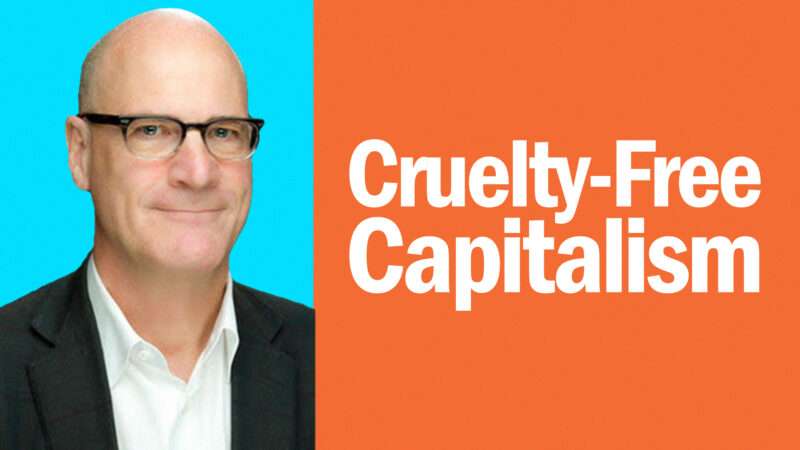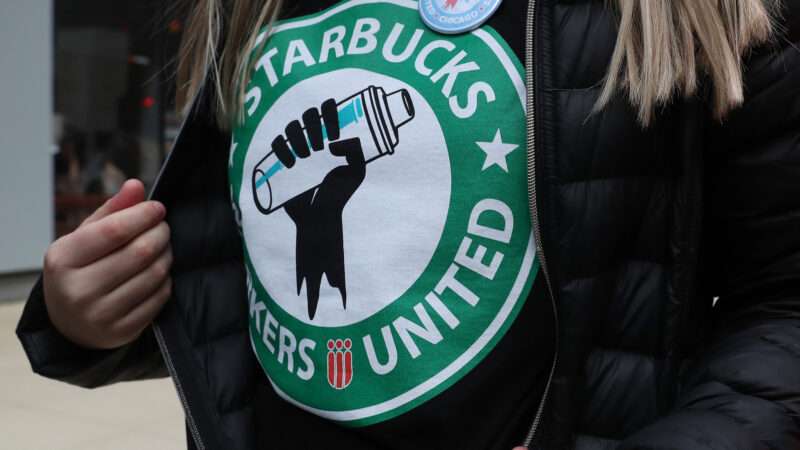On June 3, in response to a grand jury subpoena served on May 11, former President Donald Trump’s lawyers gave the FBI 38 classified documents that he had taken to his residence at Mar-a-Lago, his Palm Beach resort, when he left office in January 2021. Trump lawyer Christina Bobb signed a sworn statement saying “a diligent search was conducted of the boxes that were moved from the White House to Florida.” That search, Bobb said, “was conducted after receipt of the subpoena, in order to locate any and all documents that are responsive to the subpoena,” which sought material marked as classified. “To the best of my knowledge,” she said, “any and all responsive documents accompany this certification.”
Despite that certification, according to a brief that the Justice Department filed last night, the FBI found “over one hundred unique documents with classification markings” when it searched Mar-a-Lago on August 8. That discovery provided further evidence that Trump or his underlings violated three federal laws cited in the FBI’s search warrant by willfully retaining government records and deliberately obstructing attempts to recover them. But if the Justice Department ultimately decides to prosecute Trump, proving those charges will be difficult, because his cavalier treatment of the records at Mar-a-Lago plausibly reflected habitual carelessness rather than criminal intent.
The Justice Department describes the June 3 handover in its response to Trump’s request that a “special master” be appointed to review the items seized at Mar-a-Lago. The meeting included Bobb, Trump lawyer Evan Corcoran, three FBI agents, and Jay Bratt, chief of the Counterintelligence and Export Control Section in the Justice Department’s National Security Division. Although the name of the “custodian” who signed the certification is blacked out in the DOJ’s filing, The New York Times reports that it was Bobb.
The 38 documents recovered during that meeting were in addition to 184 classified documents found in 15 boxes that Trump had given the National Archives and Records Administration (NARA) in January. The DOJ says “counsel for the former President offered no explanation as to why boxes of government records, including 38 documents with classification markings, remained at the Premises nearly five months after the production of the Fifteen Boxes and nearly one-and-a-half years after the end of the Administration.”
According to the Justice Department, the FBI sought to verify Bobb’s statement by looking in the boxes of documents that Trump was keeping in a basement storage room at Mar-a-Lago. But “the former President’s counsel explicitly prohibited government personnel from opening or looking inside any of the boxes that remained in the storage room, giving no opportunity for the government to confirm that no documents with classification markings remained.”
After that meeting, the Justice Department says, “further investigation indicated that the response to the subpoena was incomplete, that obstructive conduct occurred in connection with the response to the subpoena, and that classified information remained at the premises.” That investigation evidently included interviews of witnesses who had seen additional classified material at Mar-a-Lago, which would have been crucial in establishing probable cause for the search.
The search confirmed the FBI’s suspicion that Trump was still keeping classified material at Mar-a-Lago. Like the documents that Trump’s representatives gave NARA in January and the FBI in June, the classified records seized during the search ranged from “confidential” to “top secret,” with some of the latter classified as “sensitive compartmented information,” an especially restricted category.
We still know very little about the nature of the information those documents contained, or why the FBI thought they posed a threat grave and imminent enough to justify its unprecedented search of a former president’s home. The Justice Department says “the Intelligence Community” is conducting a “review of the national security risk that improper storage of these highly sensitive materials may have caused” and considering “measures to rectify or mitigate any damage that improper storage caused.”
The search also showed that, contrary to what Trump’s lawyers had indicated, some of the classified documents were kept outside the storage room, which was secured by a padlock. The Justice Department says 76 of more than 100 documents with classification markings were found in that room, which means dozens were discovered elsewhere.
According to the Justice Department, the FBI found “three classified documents” in desk drawers when it searched Trump’s office. One drawer “contained classified documents and governmental records commingled with other documents.” Additional documents with “classified cover sheets” were “recovered from a container” in Trump’s office.
The above photograph, which the Justice Department included in its brief, shows the documents found in Trump’s office. In response, Trump complains that it was “terrible the way the FBI, during the Raid of Mar-a-Lago, threw documents haphazardly all over the floor (perhaps pretending it was me that did it!), and then started taking pictures of them for the public to see.” But the Justice Department never implied that Trump threw those records on the floor; it said he should not have had them at Mar-a-Lago to begin with.
The scattered locations of conspicuously marked classified documents suggest that the search described by Bobb was not quite as “diligent” as she claimed. “That the FBI, in a matter of hours, recovered twice as many documents with classification markings as the ‘diligent search’ that the former President’s counsel and other representatives had weeks to perform calls into serious question the representations made in the June 3 certification and casts doubt on the extent of cooperation in this matter,” the Justice Department says.
Trump insists that the documents at Mar-a-Lago, despite their markings, were no longer classified, because he had “a standing order” as president that automatically declassified anything he happened to remove from the Oval Office. But according to the Justice Department, Trump’s representatives made no such claim when they delivered documents to NARA in January or to the FBI in June. During the latter meeting, it says, “neither counsel nor the custodian asserted that the former President had declassified the documents.” To the contrary, Corcoran “handled them in a manner that suggested [he] believed that the documents were classified: the production included a single Redweld envelope, double-wrapped in tape, containing the documents.”
It is not clear whether Trump actually issued the purported “standing order,” which he first described four days after the FBI’s search. That policy was news to John Bolton, who served as the former president’s national security adviser for 17 months in 2018 and 2019, and to Glenn Gerstell, who served as general counsel for the National Security Agency from 2015 to 2020. More to the point, the three statutes cited in the Mar-a-Lago search warrant do not hinge on whether the documents were in fact classified.
18 USC 2071 makes it a felony, punishable by up to three years in prison, to “willfully and unlawfully” conceal, remove, or destroy a U.S. government document. That would include unclassified documents that belonged in the National Archives under the Presidential Records Act. That law says “the United States shall reserve and retain complete ownership, possession, and control of Presidential records.”
18 USC 793(e) makes it a felony, punishable by up to 10 years in prison, to improperly retain “defense information.” As relevant here, that provision applies to anyone who has “unauthorized possession” of “information relating to the national defense” that he “has reason to believe could be used to the injury of the United States or to the advantage of any foreign nation” and who “willfully retains” that information and “fails to deliver it to the officer or employee of the United States entitled to receive it.”
18 USC 1519 makes it a felony, punishable by up to 20 years in prison, to conceal “any record, document, or tangible object” with the intent to “impede, obstruct, or influence” a federal investigation. Even if Trump declassified all of the documents at Mar-a-Lago when he still had the authority to do, intentionally withholding the material demanded by the subpoena could qualify as obstruction.
Still, all of these offenses require proof of intent. Given what we know about Trump, it is entirely plausible that he thought the records he took belonged to him, did not know or care about the relevant laws, and responded lazily and haphazardly when NARA and the FBI tried to recover the documents.
According to the redacted search warrant affidavit, NARA first requested the return of missing presidential records on May 6, 2021, three and a half months after Trump left office. In a February 18 letter to Rep. Carolyn Maloney (D–N.Y.), who chairs the House Committee on Oversight and Reform, U.S. Archivist David Ferriero reported that “NARA had ongoing communications with the representatives of former President Trump throughout 2021, which resulted in the transfer of 15 boxes to NARA in January 2022,” two years after Trump left office.
What was happening in the meantime? While Trump’s advisers “tried to help the National Archives retrieve the material,” the Times reports, “the former president repeatedly resisted [their] entreaties,” because he mistakenly thought he had a right to keep mementos such as his pardon for Roger Stone, letters from North Korean dictator Kim Jong-un, and the note that former President Barack Obama left for his successor when Trump took office. “It’s not theirs; it’s mine,” Trump repeatedly insisted, according to “several advisers” interviewed by the Times.
Given that attitude, Trump’s foot-dragging is not surprising. But if Trump sincerely believed that the National Archives had no right to “his” records, it would be hard to prove that he “willfully” retained or concealed government documents.
The fact that Trump’s response to NARA’s requests was incomplete likewise does not necessarily prove that he intentionally broke the law. Maybe he did not know exactly what he had and did not bother to find out. Such sloppiness would be consistent with his behavior as president.
In June 2018, Ferriero said in his letter to Maloney, “NARA learned from a press report in Politico that textual Presidential records were being torn up by former President Trump and that White House staff were attempting to tape them back together.” When NARA asked the president’s lawyers about that, “the White House Counsel’s Office indicated that they would address the matter.”
After Trump left office, Ferriero said, “NARA learned that additional paper records that had been torn up by former President Trump were included in the records transferred to us. Although White House staff during the Trump Administration recovered and taped together some of the torn-up records, a number of other torn-up records that were transferred had not been reconstructed by the White House.”
Trump’s purported policy of declassifying material that he removed from the Oval Office likewise suggests he was careless with government documents. By Trump’s account, his “standing order” applied to anything he decided to study in his residence in preparation for the next day’s work. But such decisions are not supposed to be based on presidential convenience; they are supposed to be based on a careful determination that declassifying any particular document would not endanger national security. The fact that records supposedly declassified by Trump still bore labels that indicated otherwise underlines how irregular and arbitrary such a policy would have been.
Bolton, who says he never heard anything about Trump’s “standing order,” cautions the former president’s critics against assuming that he had sinister motives in deciding which classified material to grab. “I think he just had an inquisitive instinct,” Bolton said in SiriusXM interview this week. “He would see things in intelligence briefings, a picture, a graph, something like that—usually not lengthy written material, that’s for sure. But he’d say ‘Well, I want to keep that,’ and it would sort of end up in a pile on his desk.”
Although “a lot of Trump’s critics have great theories about how he’s gonna use this information to blackmail people,” Bolton said, “I think that gives Trump too much credit. I just think he brought things into his possession thinking…it’d be interesting to look at it later, and that’s how it happened. That doesn’t excuse it. But I think when you overstate your case against Trump, and by really giving him powers and mental ability that doesn’t match the reality, you’re setting up a target that you can’t possibly get to.”
Assuming that Trump deliberately concealed classified documents at Mar-a-Lago with the intent of impeding the FBI’s investigation likewise may give him too much credit. Even by the Justice Department’s account, Trump would casually toss sensitive records into desk drawers, where they were mixed together with other material and perhaps forgotten. The idea that he knew exactly what the boxes in the storage room contained and consciously decided to hide classified documents from the FBI seems inconsistent with this picture of impulsive negligence.
The behavior of Trump’s lawyers, by contrast, seems more deliberate. Unlike Trump, they were legal professionals confronted by a federal subpoena seeking every document at Mar-a-Lago that was marked as classified. Although they had more than three weeks to make sure they had identified all such documents, they somehow missed more than 100. It is hard to come up with an innocent explanation for that failure.
The post Trump Lawyers' 'Diligent Search' for Classified Documents at Mar-a-Lago Missed More Than 100 appeared first on Reason.com.
from Latest https://ift.tt/qKUyxaL
via IFTTT




